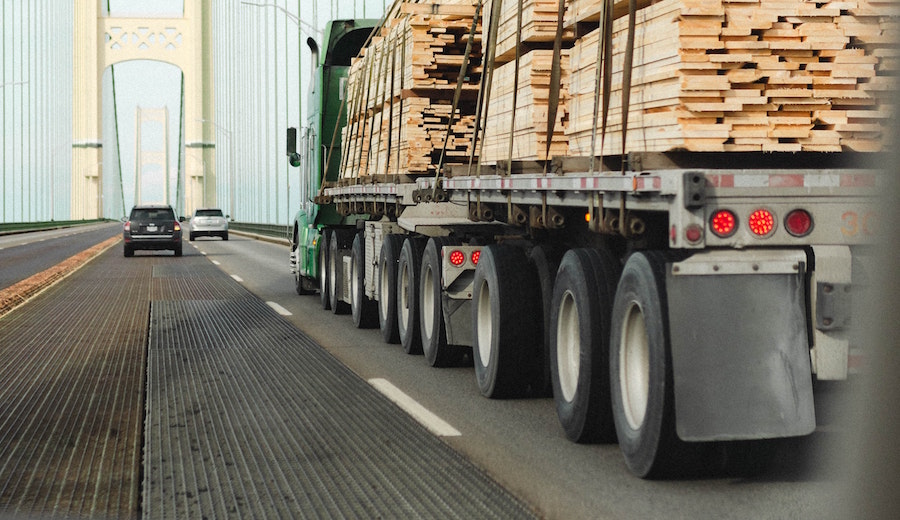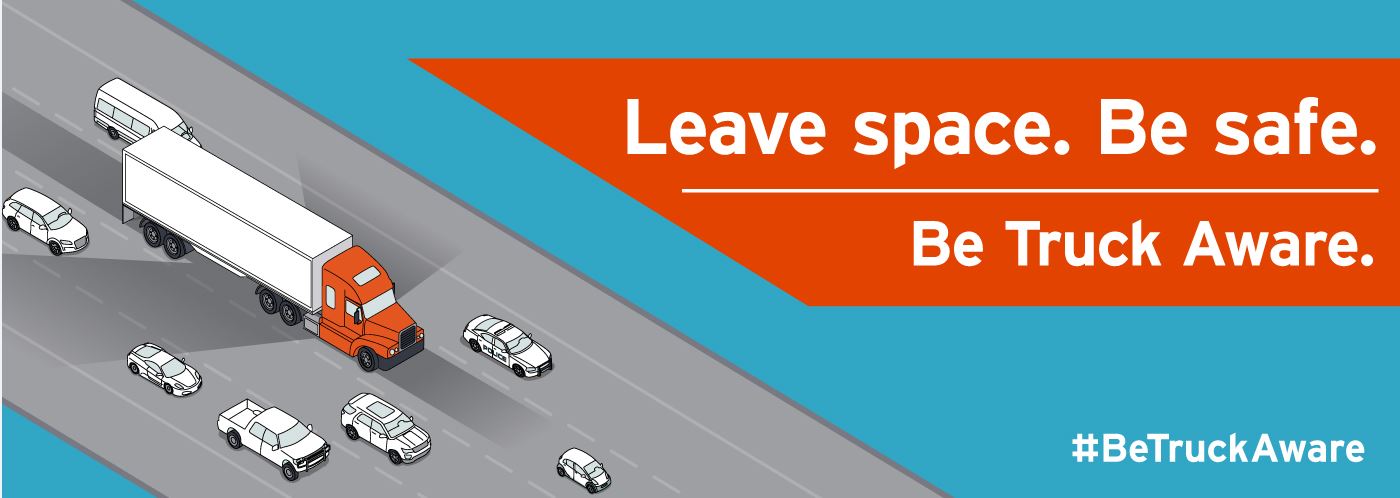
Have you noticed more trucks on the road lately? That’s because the supply chain across western Canada is returning to normal. Factor in the arrival of the holiday shopping season and you’ll find yourself staring at the backside of even more step-trucks and big rigs in the weeks ahead. While they are necessary to a number of essential services they can be a real pain to trail behind. If you find yourself uneasy when sharing the road with them, your otherwise calm demeanor behind the wheel can go into a tailspin, literally. Here is what you need to do to keep that from happening.
4 Practical Tips to Safe Driving When Stuck Behind a Large Truck on BC Roads and Highways
1. Don’t Get in Their Blind Spot

Courtesy of the Province of British Columbia
The provincial government’s #BeTruckAware campaign lists blind spot awareness as the top safety tip for driving behind and around trucks. The shaded areas surrounding the big rig pictured above shows the spots to avoid, so drive accordingly on your approach. Find your sweet spot and stick to it until the opportunity for safe passing presents itself. Keep reading.
2. Resist the Urge to Pass Before it’s the Right Time
Your first thought when stuck behind a large truck may be to pass as soon as possible. This gets a lot of drivers in trouble.
Before doing so, make sure you can pass without ending up in one of the truck’s blind spots listed above. From there, make sure that you can see a clear and open road ahead. This is not the time to play chicken and attempt to squeeze a pass in before the road bends. Progress at a safe and steady speed until you are far enough passed the truck to change lanes, but DO NOT change lanes in front of the truck until you can see its entire front in your rearview mirror. Once in front, maintain a steady speed as a quick slow down can get you rear ended by a nine-ton (without freight!) beast.
3. Add Trail-Behind Time
The general rule when driving behind any vehicle is to allow at least 2-seconds between your vehicle and theirs. This allows you enough time to react should they stop, slow down, or suddenly veer to the side. In the rain, add at least 1-second. In snow or icy conditions add at least 2-seconds to that equation.
What about when you are trailing behind a truck? Add 1 extra second for each estimated 3-meters of trailer or truck bed length. Let’s review the trailing time for when behind the average 48 to 53 foot (14.5 to 16 meters) trailer-truck.
- At least 3-seconds trailing time when driving in normal conditions
- At least 4-seconds trailing time when driving in rainy conditions
- At least 5-seconds trailing time when driving in snow or icy conditions
4. Pull Over and Take a Breather
There are some scenarios that make you feel especially uneasy. Driving behind a semi-trailer is one thing, but when it is carrying certain types of cargo (logs, lumber, etc.) no trailing distance may suit your comfort level. If things simply feel too intense when trailing a big rig on the highway, it’s best to reset. Keep a safe and steady pace until you spy a designated rest stop and pull over. Allow enough time to pass so that when you get back on the road there is a low likelihood of catching up to the vehicle that caused you stress. Anxiety and negative thoughts are actually a significant cause of driver distraction so be mindful of your state of mind when driving behind a truck.
Other articles you might be interested in: